Xian (西安) is a Chinese city located on the Wei River. It has served as the capital of 13 ruling dynasties throughout its history. Now it serves as the administrative center of Shaanxi Province. Translated from Chinese, Xi'an sounds like the Western world.
History of Xi'an
The history of Xi'an begins in the Stone Age. The city was founded in the XI century BC. It is one of the most ancient cities on our planet. No wonder the Sians call it the cradle of civilization.
The first emperor of the country, Qin Shi Huang, gave Xi'an the status of the capital of the Zhou kingdom. From here came the Great Silk Road, thanks to which the city turned into an international trade center. In the middle of the 7th century, Xi'an became the center for the spread of Buddhism.
During its existence, Xian changed several names: Feng, Xianyang, Chang An, Hao, Chang'an.
Its heyday was observed during the Tang Dynasty (in the VI-IX centuries). During this period, it was called Chang'an (translated as "eternal peace") and could compete with Rome, Constantinople and Baghdad. After the fall of the dynasty, the city lost its former splendor and began to decline.
In the 20th century, the transformation of the city began, as a result of which it turned into an industrial and tourist center. At the end of the last century, Xi'an was declared an open city.
Sights of Xi'an
Xi'an has many attractions that attract tourists from all over the world. It can be compared to a museum located under the sky.
Shaanxi History Museum
 Shaanxi History Museum (Shaanxi History Museum,陕
西
历
史博物
馆
)
, created in 1992, is known not only for its rich collection and unique exhibits, but also for its modern equipment. The museum houses more than 300 exhibits covering the history of China in chronological order. In addition to ceramics, kitchen utensils, sculptures, which include Buddhist statues, the museum has four terracotta figures of Qin Shi Huang's imperial army soldiers found in the emperor's tomb.
Shaanxi History Museum (Shaanxi History Museum,陕
西
历
史博物
馆
)
, created in 1992, is known not only for its rich collection and unique exhibits, but also for its modern equipment. The museum houses more than 300 exhibits covering the history of China in chronological order. In addition to ceramics, kitchen utensils, sculptures, which include Buddhist statues, the museum has four terracotta figures of Qin Shi Huang's imperial army soldiers found in the emperor's tomb.
Banpo Neolithic Site
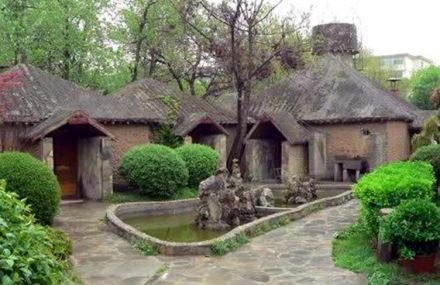 In the middle of the last century, archaeologists discovered a unique ancient village not far from Xi'an, which they named banpo (Banpo,半坡
)
. It is known as the oldest Chinese settlement.
In the middle of the last century, archaeologists discovered a unique ancient village not far from Xi'an, which they named banpo (Banpo,半坡
)
. It is known as the oldest Chinese settlement.
There are 45 dilapidated houses on the territory of the parking lot, part of which are half underground. They are round or square in shape. The entrance of all dwellings is directed to the south.
The settlement is surrounded by a protective moat. Near it are ceramic workshops and a cemetery, on the territory of which there are 250 graves.
city wall
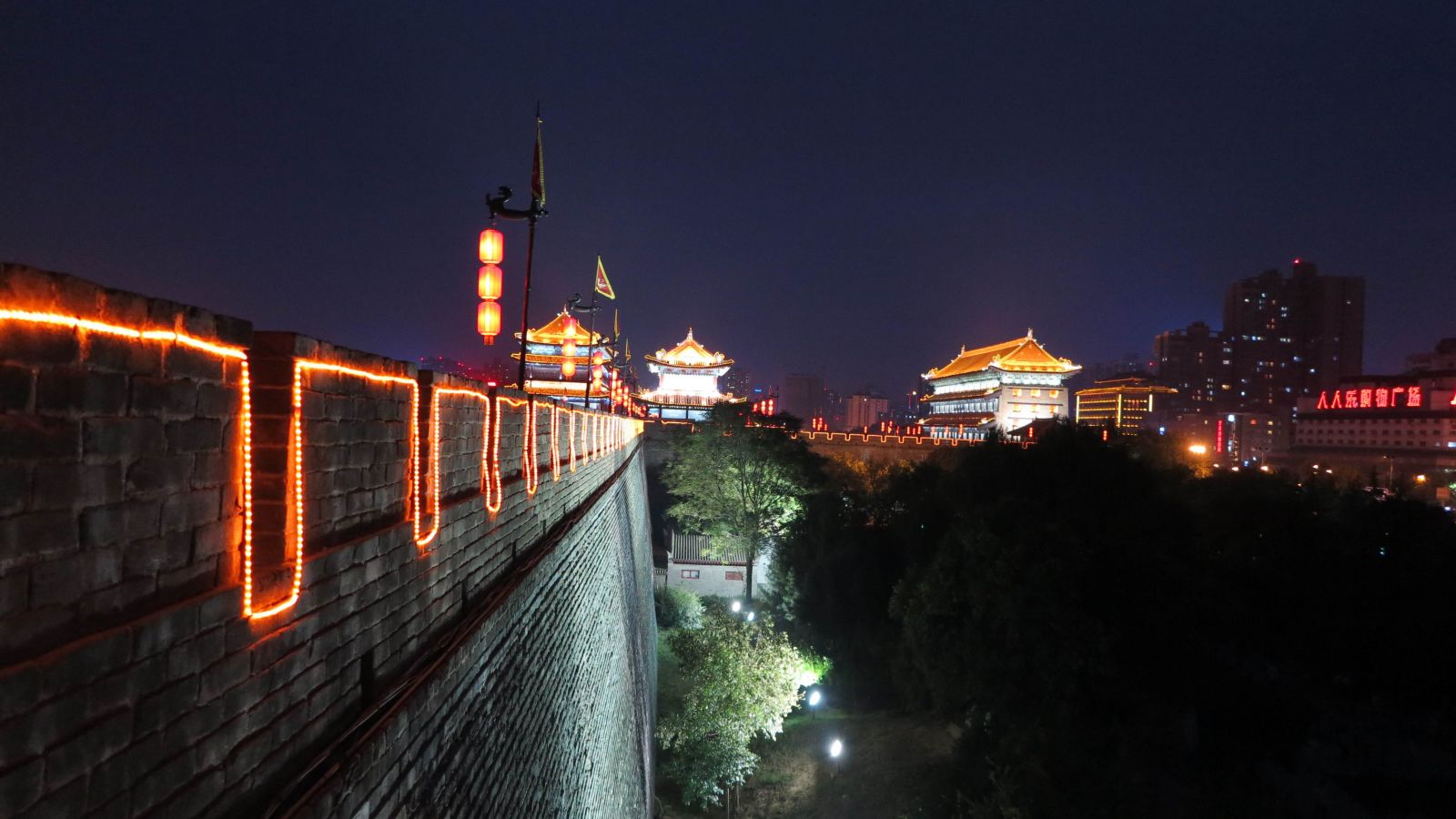 city wall(Town wall, 城牆) was built during the Ming Dynasty (in the fourteenth century) on the foundations of the wall laid in the Tang era. The wall, 14 kilometers long and 12 meters high, makes an unforgettable impression and testifies to the former greatness of the city. The width of the wall is 12-14 meters. There are four fortified gates in the wall, and watchtowers are located at its corners. A moat was dug around it. Those who wish can walk along the wall, admiring the picturesque landscapes.
city wall(Town wall, 城牆) was built during the Ming Dynasty (in the fourteenth century) on the foundations of the wall laid in the Tang era. The wall, 14 kilometers long and 12 meters high, makes an unforgettable impression and testifies to the former greatness of the city. The width of the wall is 12-14 meters. There are four fortified gates in the wall, and watchtowers are located at its corners. A moat was dug around it. Those who wish can walk along the wall, admiring the picturesque landscapes.
Belfry of Zhong Liu
 In the center of the city, at the crossroads of four main avenues, rises a huge bell tower(Bell Tower of Xi "a, 西安钟楼). Her bells previously notified residents that the city gates were opening, indicating the awakening of the city.
In the center of the city, at the crossroads of four main avenues, rises a huge bell tower(Bell Tower of Xi "a, 西安钟楼). Her bells previously notified residents that the city gates were opening, indicating the awakening of the city.
This wooden tower is of interest because not a single nail was used in its construction. If you climb the tower, you can admire the surroundings.
drum tower
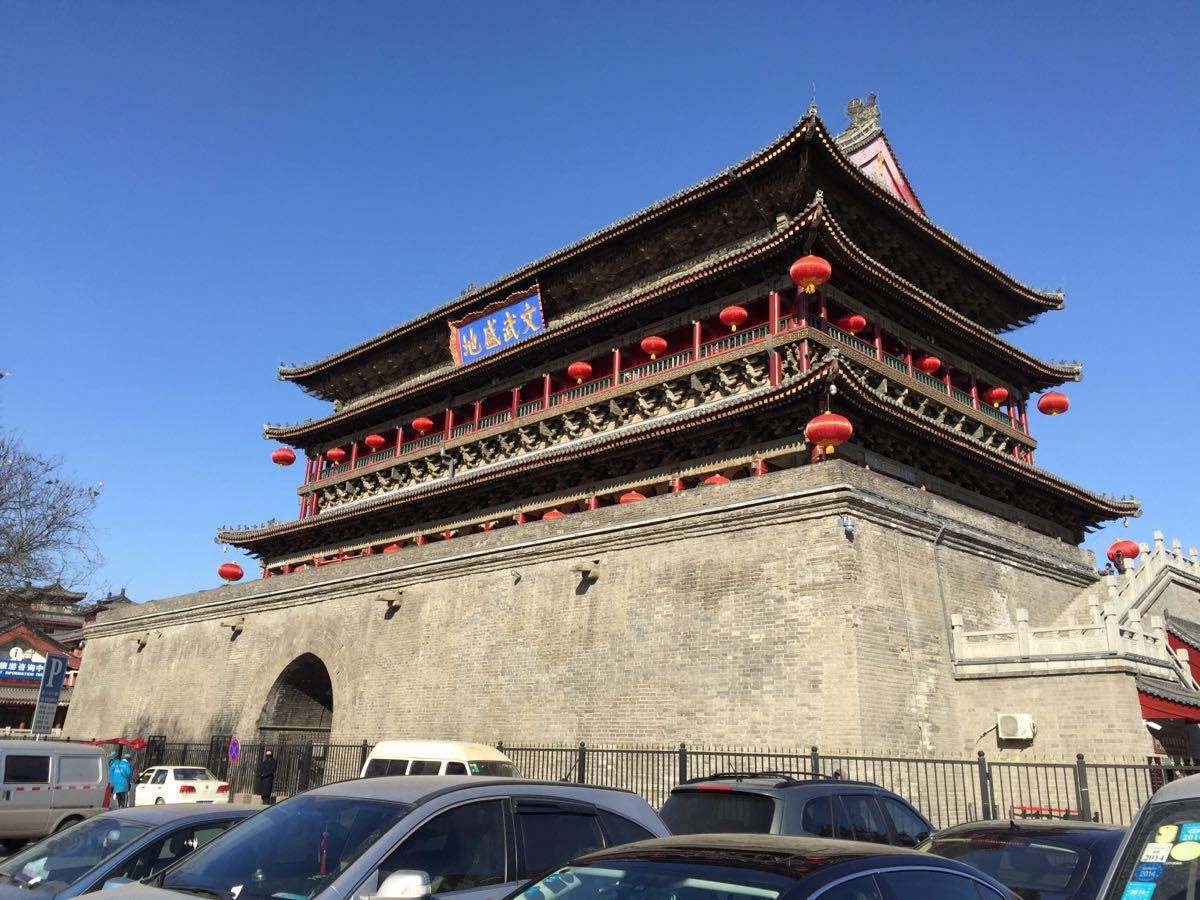 Opposite the bell tower is drum tower (Drum Tower of Xi "a,西安
鼓楼
)
. The drumming, in contrast to the ringing of bells, announced the closing of the city gates and the end of the day.
Opposite the bell tower is drum tower (Drum Tower of Xi "a,西安
鼓楼
)
. The drumming, in contrast to the ringing of bells, announced the closing of the city gates and the end of the day.
Terracotta Army
 Terracotta Army(Terracotta Army, 兵馬俑) - this is the name of a collection of terracotta figures (1868 pieces) of warriors (they differ in clothing, facial features, postures, nationality) and horses, made in natural size. These figures have been underground for more than two millennia. A local peasant found them on his plot in 1974.
Terracotta Army(Terracotta Army, 兵馬俑) - this is the name of a collection of terracotta figures (1868 pieces) of warriors (they differ in clothing, facial features, postures, nationality) and horses, made in natural size. These figures have been underground for more than two millennia. A local peasant found them on his plot in 1974.
Two Goose Pagodas
 Big Goose Pagoda(Giant Wild Goose Pagoda, Da Yan Ta, 大雁塔) serves as the hallmark of the city. The pagoda was built by Emperor Gao Zong in memory of his mother. It also contained Buddhist manuscripts brought from India. At first, the pagoda was five-story, but later it was completed. The current height of the building is 64 meters. In appearance, the pagoda resembles a fortress. From its top, tourists like to admire the city panorama.
Big Goose Pagoda(Giant Wild Goose Pagoda, Da Yan Ta, 大雁塔) serves as the hallmark of the city. The pagoda was built by Emperor Gao Zong in memory of his mother. It also contained Buddhist manuscripts brought from India. At first, the pagoda was five-story, but later it was completed. The current height of the building is 64 meters. In appearance, the pagoda resembles a fortress. From its top, tourists like to admire the city panorama.
Little Goose Pagoda(Small Wild Goose Pagoda, Xiao Yan Ta, 小雁塔) stands near Jianfu Shrine, built after Gao Zong's death. The top of the 43-meter pagoda was demolished by an earthquake. The pagoda also housed Buddhist scriptures.
Singing Fountains
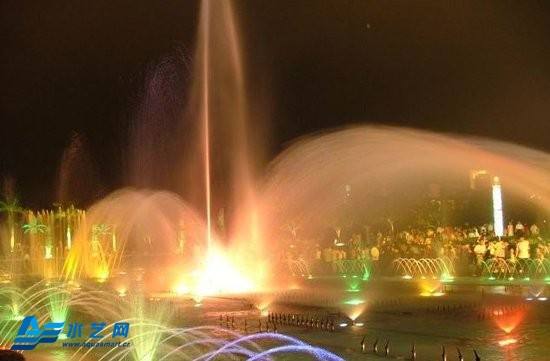 Not far from the Two Goose Pagodas is a park singing fountains (Vocal Fountains,歌唱噴泉
)
, which includes the largest Asian singing fountain. The color and music show lasts 20 minutes and does not leave anyone indifferent.
Not far from the Two Goose Pagodas is a park singing fountains (Vocal Fountains,歌唱噴泉
)
, which includes the largest Asian singing fountain. The color and music show lasts 20 minutes and does not leave anyone indifferent.
Huaqing hot spring
 In the past Huaqing(Huaqing Thermal Spring, 華清池) was a favorite resting place of the Tang emperors. Here they had fun with the concubines.
In the past Huaqing(Huaqing Thermal Spring, 華清池) was a favorite resting place of the Tang emperors. Here they had fun with the concubines.
A park complex is built around the source, striking tourists with a picturesque view.
Temple of Confucius
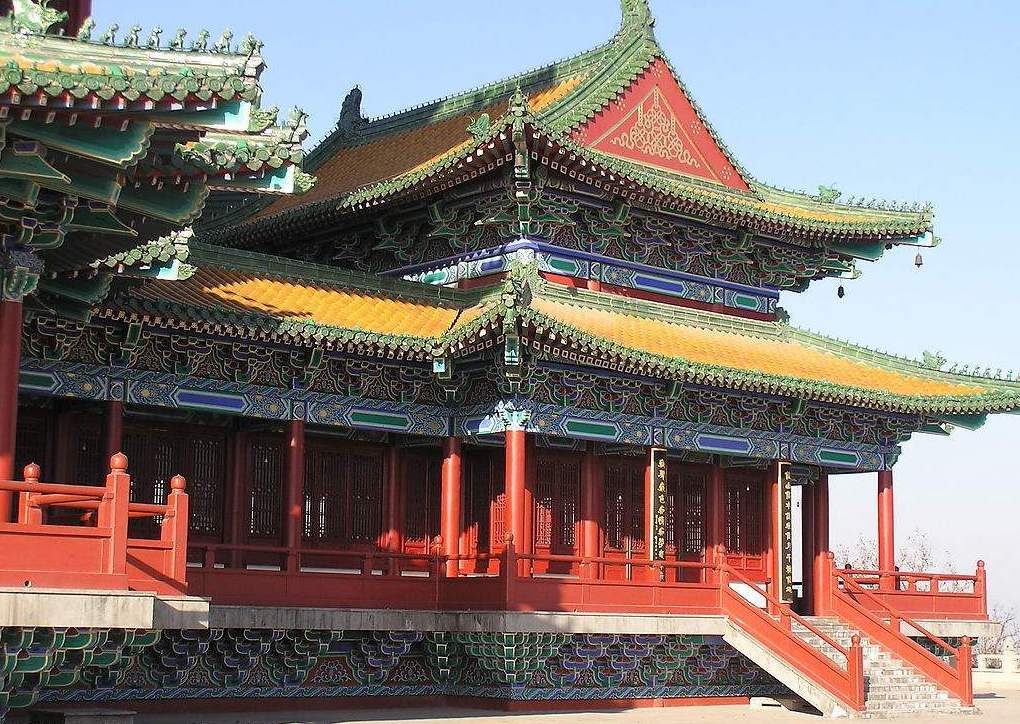 Temple of Confucius(Temple of Confucius, 夫子廟), now turned into a museum. Its exposition tells about the history of the Great Silk Road.
Temple of Confucius(Temple of Confucius, 夫子廟), now turned into a museum. Its exposition tells about the history of the Great Silk Road.
An unusual exhibit is kept here - the Stele Forest (碑林). This is the name of the collection of stone books (there are 2300 of them), represented by inscriptions on steles. Among them there is also a Christian (Nestorian).
Signs in English are attached to the most important exhibits.
Xi'an City Mosque
 Xi'an mosque (Great Mosque of Xi'an,西安清真大寺
),
immersed in the greenery of parks and gardens, is one of the four major mosques in Xi'an. Tourists are allowed to enter her courtyard, but the entrance to the prayer hall is open only to Muslims.
Xi'an mosque (Great Mosque of Xi'an,西安清真大寺
),
immersed in the greenery of parks and gardens, is one of the four major mosques in Xi'an. Tourists are allowed to enter her courtyard, but the entrance to the prayer hall is open only to Muslims.
lotus park
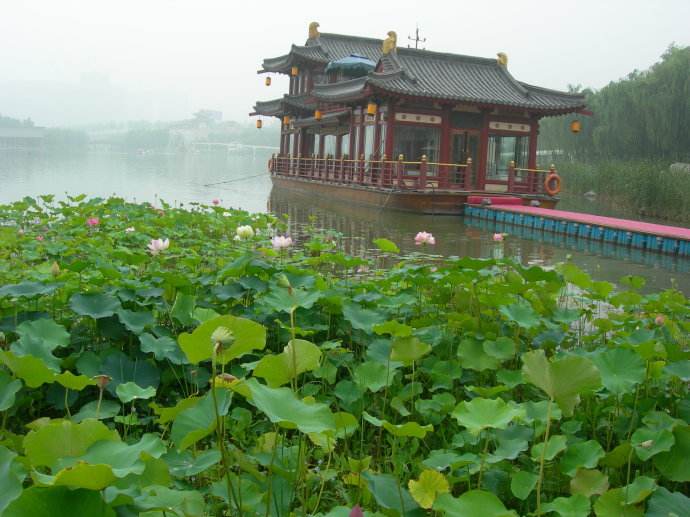 lotus park Lotus park, Da Tang Fu Rong Yuan, 蓮花公園) serves as the epitome of the Tang era. The modern park was built on the ruins of an ancient park. It impresses with its picturesque views and magnificent landscapes. The third part of the park is occupied by a lake in which beautiful lotuses grow. Also in the park there are cultural buildings: towers, palaces, theater.
lotus park Lotus park, Da Tang Fu Rong Yuan, 蓮花公園) serves as the epitome of the Tang era. The modern park was built on the ruins of an ancient park. It impresses with its picturesque views and magnificent landscapes. The third part of the park is occupied by a lake in which beautiful lotuses grow. Also in the park there are cultural buildings: towers, palaces, theater.
The park is divided into 12 thematic zones, each of which is dedicated to the life of the common people and the imperial court.
The park often hosts theatrical performances and serves as a filming site for films. There is also a wide variety of entertainment in the park.
What to see?
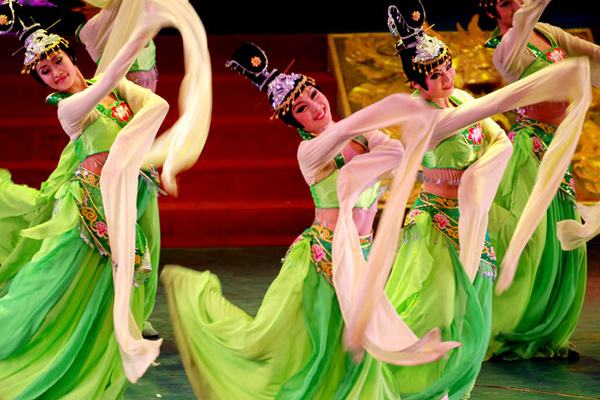 The most interesting event in Xi'an, which is worth visiting for tourists - Tang dynasty music and dance show (Tang Dynasty Show,唐代的舞蹈表演
)
. It will introduce the guests of the city to the way of life and traditions of the Tang Dynasty.
The most interesting event in Xi'an, which is worth visiting for tourists - Tang dynasty music and dance show (Tang Dynasty Show,唐代的舞蹈表演
)
. It will introduce the guests of the city to the way of life and traditions of the Tang Dynasty.
This show organically combines poetry, singing, playing musical instruments and dancing. In addition, the artists wear amazing costumes. The troupe travels with performances not only in China, but all over the world. Performances are always a great success.
Universities in Xi'an
Xi'an Jiaotong University
Xi'an Jiaotong University (Xian Jiaotong University,西安交通大學 ) was founded in Shanghai in 1896, but in 1956, by decision of the government, it was moved to Xi'an. The university actively conducts research. It closely cooperates with educational institutions of other countries. Foreign professors and Nobel Prize winners give lectures here, which made it possible to ensure the high quality of teaching and gain credibility among employers. Xi'an Jiaotong University occupies a strong position in the top twenty of the best educational institutions in the country, and also enters the top in the world educational rankings.
University of Architecture and Construction
Xi'an University of Architecture and Construction(Xi "an University of Architecture and Technology, 西安建筑科技大学) was founded in 1895. It has 26 thousand students.
Xi'an Eurasian Institute(Xian Eurasia University, 西安欧亚学院) was opened as recently as 1995. It trains 20,000 students. There is a well organized distribution system for graduates. The university uses new teaching methods (multimedia network, satellite transmission), laboratories and research centers are equipped, there is a superbly equipped library and a huge stadium.
Xi'an Transportation University(Xi "an Jiaotong University, 西安交通大学) is considered one of the best in the country. It cooperates with educational institutions and research centers in other countries.
Xi'an Petroleum University(Xi`An Shiyou University, 西安石油大学) founded in 1951. This is the first institution of higher education in China, which began training specialists in the field of oil and petrochemical industry. The university includes 13 institutes. The university cooperates with foreign universities, participates in the Chinese-American training program. Together with educational institutions in America and Russia, he provides internships for students during their summer vacations in the United States. It accepts foreign students on state scholarships.
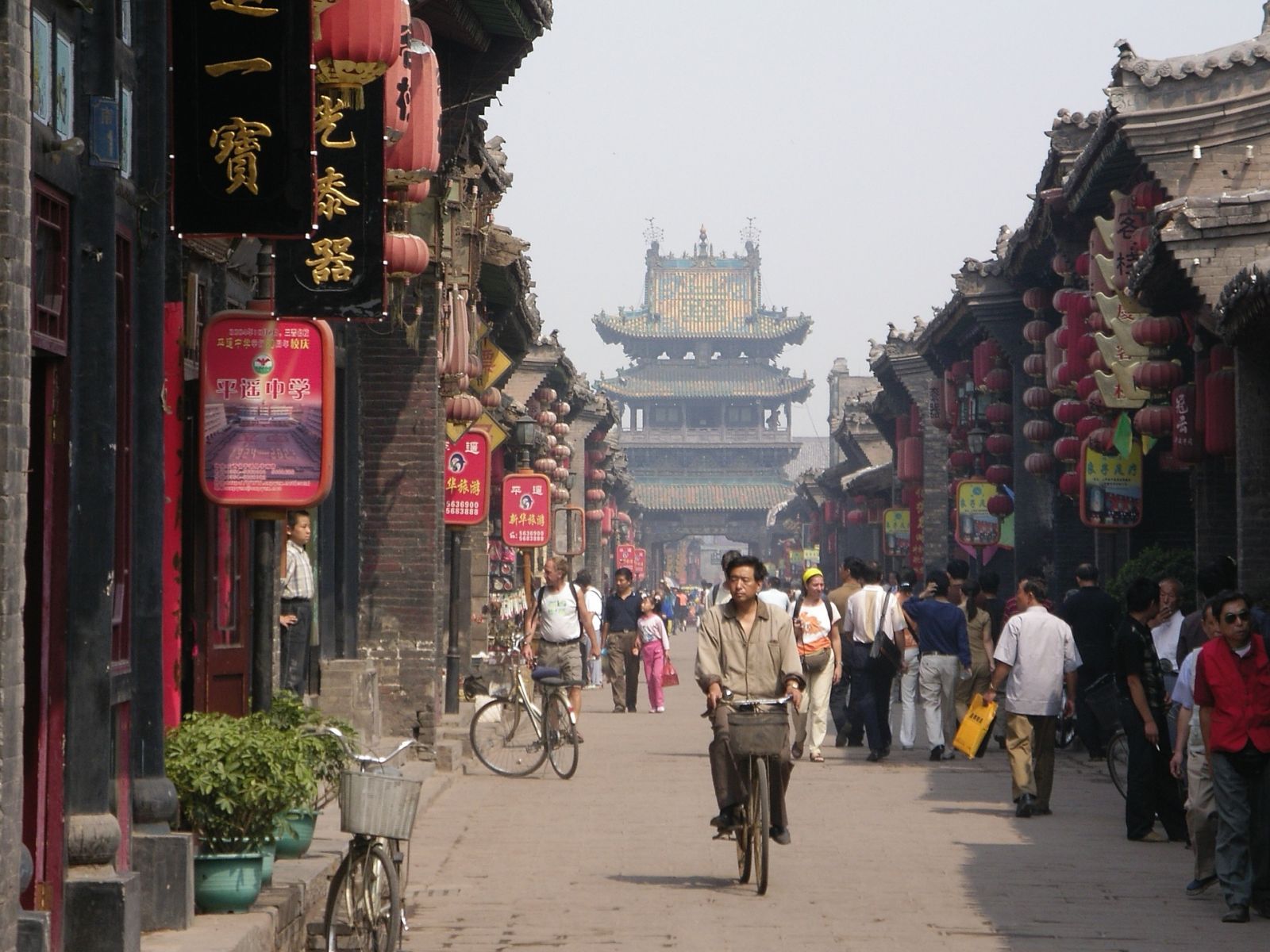
Industry of Xi'an
More than 60 mineral deposits have been developed in the vicinity of the city, including iron, gold, jade, quartz, manganese, graphite, tungsten, marble, and copper.
How to get there?
You can get to Xi'an by plane, not far from the city there is an international airport. From it every 20 minutes regular buses go to Xi'an. But there is no direct flight from Russia to Xian: you will have to make a transfer in Beijing, Shanghai or Hong Kong. You can also get to Xi'an by train. But there is no direct train to Xi'an from Russia either.
From any part of China, Xi'an can be reached by car: the city is located at the intersection of the most important highways.
